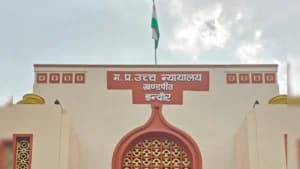The Uttar Pradesh government has firmly denied the claims made by the Sambhal Shahi Jama Masjid Committee regarding a well near the mosque, stating that the well is situated on public land and holds no association with the religious structure.
In a status report submitted to the Supreme Court, the State clarified that the well, locally referred to as “Dharani Varah Koop,” is not within the premises of the Mughal-era structure. The government described the structure as a “disputed religious site” and confirmed that the well does not have any relation to the mosque.
"Even the disputed religious site itself is on public land. The well in question is a public well, and it is not located within the mosque or the disputed religious site. In fact, there is no direct access to the well from inside the mosque," the State asserted.
Read Also:- Supreme Court Dismisses Contempt Petition on illegal Demolition, Cites Absence of Sanction Plan
Background of the Case
In November last year, a trial court ordered a survey of the Shahi Jama Masjid in Chandausi. This was in response to a suit claiming that the mosque was built after demolishing an ancient temple. The mosque management challenged the order and approached the Supreme Court. However, the apex court directed them to seek relief from the High Court and, in the meantime, stayed the survey proceedings.
Subsequently, the mosque committee filed an interlocutory application, alleging that the local administration had issued notices and posters labeling the adjacent well as a temple. The mosque panel argued that the well had been in use for their purposes and claimed that opening it for Hindu prayers would cause communal tensions and disrupt peace in the area.
In January, the Supreme Court intervened by restraining authorities from acting upon the notice and sought a status report from the State.
According to the State’s report, the well has historically been used by people from all communities. However, it was found that:
- The well has been dry for a long time.
- After the 1978 communal riots, a police post was constructed over one part of the well, while the other part remained accessible.
- In 2012, the well was covered, and presently, it holds no water.
Read Also:- Supreme Court Directs Petitioner to Approach High Court in Contempt Case Over Demolition in Sambhal
To assess the situation, a three-member committee was formed, comprising the SDM Sambhal, the Area Officer, and the Executive Officer of the Municipal Council, Sambhal. The committee examined the status of the well and discovered discrepancies in the claims made by the mosque panel.
The State alleged that the mosque committee had attached misleading photographs in their application, attempting to depict that the well was inside the mosque premises.
"Upon examining the records, it was found that the petitioner failed to disclose that another well, known as 'Yagna Koop,' exists within the boundary walls of the mosque. However, there has been no interference with this well," the report mentioned.
The inspection revealed that the contested well is situated outside the mosque's boundary wall. The government submitted photographic evidence to substantiate this claim, arguing that the mosque panel misrepresented facts to establish private ownership over public property.
The State further contended that the Special Leave Petition (SLP) filed by the mosque panel is now irrelevant since the Allahabad High Court has already stayed the trial court’s proceedings. Moreover, the dispute regarding the well lies outside the purview of the SLP.
"The entire application is misconceived. The petitioners are trying to assert private ownership over public property,"
the State argued before the Supreme Court.
Case Reference: Committee of Management, Shahi Jama Masjid, Sambhal v. Hari Shankar Jain & Others | SLP(C) No. 28500/2024














